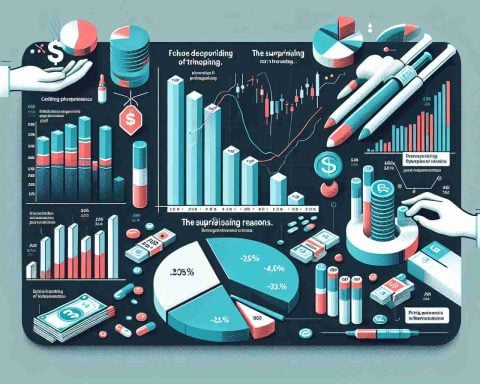Supply Chain Struggles in the Automotive Industry
The automotive industry has always faced significant challenges in supply chain management, often marked by risk and unpredictability. Manufacturers juggle a myriad of components essential for assembling vehicles, and even a minor disruption in this intricate system can lead to major setbacks. A variety of factors, including natural disasters, geopolitical conflicts, adjustments in trade regulations, financial difficulties of suppliers, and unexpected events, can jeopardize operations and production timelines.
The rise of electric vehicles (EVs) compounds these issues, introducing unique complexities due to their new bill of materials (BOM), particularly regarding battery components. The shift to EVs not only impacts traditional supply chains but also highlights existing vulnerabilities.
This perspective is supported by Anders Lillevik, the CEO and Founder of the supply chain software firm Focal Point. With over twenty years of experience in procurement, he emphasizes the necessity of having flexible and responsive procurement strategies. As the automotive landscape evolves, manufacturers must adapt to these changes swiftly to remain competitive and mitigate risks associated with their supply chains.
In conclusion, as challenges multiply, the need for resilience in supply chain processes within the automotive sector has never been greater. The future will demand innovative solutions to tackle these rising risks effectively.
Revving Up Resilience: How the Automotive Industry is Overcoming Supply Chain Struggles
Introduction
The automotive industry is at a critical juncture, grappling with myriad challenges in its supply chain management. As the sector evolves with the rise of electric vehicles (EVs) and changing global dynamics, new strategies and solutions are essential for manufacturers to navigate these complexities effectively.
Current Challenges in Supply Chain Management
1. Component Dependencies: Modern vehicles require a diverse array of components, and a single disruption can halt production. This intricacy is particularly evident with the increasing complexity of electronic parts and software integration in cars.
2. Global Disruptions: Recent events, including the COVID-19 pandemic, have highlighted vulnerabilities in supply chains. Natural disasters and geopolitical tensions also present significant risks, leading to shortages and delays.
3. Financial Stability of Suppliers: The financial health of suppliers is crucial. Manufacturers need to carefully vet their suppliers to ensure they can withstand economic fluctuations.
Innovations in Supply Chain Strategies
– Digital Transformation: Companies are increasingly adopting digital tools such as AI and big data analytics to predict disruptions and manage inventory more efficiently. These technologies enable real-time tracking and enhanced decision-making capabilities.
– Diversification of Suppliers: To mitigate risks, manufacturers are diversifying their supplier base. This strategy not only strengthens supply chain resilience but also encourages competitive pricing and innovation.
– Sustainability Initiatives: Environmental considerations are reshaping supply chains, prompting manufacturers to seek sustainable materials and practices. This shift not only appeals to eco-conscious consumers but also often leads to greater efficiencies.
EVs and New Supply Chain Dynamics
The rise of electric vehicles is reshaping the automotive landscape, necessitating new supply chain approaches:
– Battery Supply Chains: The sourcing of battery components has become a focal point, with manufacturers seeking stable and ethical supply chains for lithium, cobalt, and nickel. Strategic partnerships with mining firms are emerging as crucial for ensuring a reliable supply of these materials.
– Localizing Production: To reduce dependency on international supply chains and mitigate risks posed by global disruptions, many manufacturers are exploring on-shore or near-shore production options. This trend not only decreases the carbon footprint associated with logistics but also enhances responsiveness.
The Future of Automotive Supply Chains
1. Predictive Analytics: As automotive manufacturers adopt predictive analytics, they will be better equipped to foresee disruptions and adjust their supply chains proactively.
2. Collaborative Ecosystems: The future will see more collaboration between manufacturers, suppliers, and technology firms, creating ecosystems that are agile and responsive to market demands.
3. Emerging Technologies: Advancements in blockchain technology may enhance traceability and transparency in supply chains, which is critical for compliance and consumer trust.
Conclusion
As the automotive industry faces unprecedented challenges within its supply chains, resilience and innovation will dictate future success. Manufacturers that embrace digital transformation, diversify their supplier networks, and prioritize sustainable practices will not only survive but thrive in the evolving landscape of the automotive market.
For more insights on automotive industry trends, visit Automotive.com.












